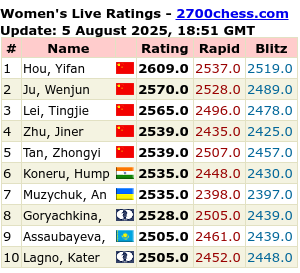Its August, Summer holiday-time, and the majority of my work-colleagues are either on them, or about to take them, so probably a good time to recap on what I’m doing in the chess arena.
ChessTempo (CT) is ongoing, and with the change of approach I made, ie not focusing completely on what CT calls rated “standard tactics”, its proving to be a success for me.
So far, I have managed 47 days continuous tactics, averaging about 40 minutes per day.
Weekends more, weekdays less, but spending time daily on some sort of tactics training has done me good.
I can’t put that in rating terms, but I can say that I have reduced the tendency to re-capture automatically, I appear to see the opportunity for targets better, perhaps meaning a geometrical view on combinations such as pins and skewers, and it seems that more ‘out-of-the-box’ ideas are bubbling up to the surface as well.
Here, for example, although I ended up playing 16...Ra8, I actually considered the exchange Rxf3, which I doubt I would have thought about 6 months ago. Its not a bad move, but I didn't feel confident enough playing it at the time.
 |
| Black to play |
Of course, there are days when I feel there is not enough time to do justice to a number of new tactics problems, in which case I have a set of ‘failed’ problems that I can practice with, consisting of about 15 or so that I can solve in less than 10 minutes.
I try to include at least one standard rated problem each day, but its no longer essential, as long as the daily workout is done.
Apart from tactics, I’m also working my way through Valeri Broznik’s “Techniques of Positional Play” after it was recommended to me by my local chess shop. So far still in chapter1 – Restricting the enemy pieces – but it does cover 7 of the 45 techniques he discusses in the book.
Lastly, to cover the opening phase of the game, I’m also working through Nigel Davies’ DVD “b6 for practical players”.
This is most enjoyable.
Although ostensibly a DVD on Owen’s Defence ( 1...b6) , he is actually showing how to use b6 as a useful transpositional move within your existing repertoire, or a move to ‘spruce up your repertoire’ and throw your opponent onto his own resources early in the game.
He particularly shows how it can be used as an adjunct to a French Defence (which is useful to me, since that it what I play as Black) but also offers what he calls economical or theory-light lines in the actual Owen's and in the English Defence against d4, c4 and Nf3.
In this way, the DVD can also offer a relatively complete Black repertoire, should you wish it.
In my opinion, Davies has an excellent presentation technique, and is a great teacher, especially as he aims most of his material at the player who has limited time to study.
To finish off, here’s an example that he gave of a tactic arising from a Tony Miles game.
 |
| Black to Play |
Black to play [ Solution 14...Qxg2 15. Kxg2 Nxe4+ ]









